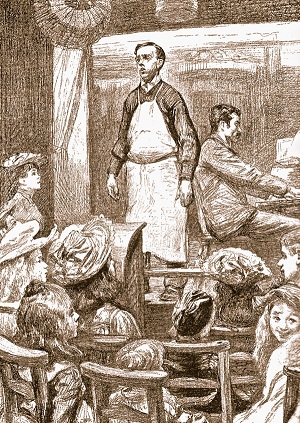Astrachan coats led to an illustration of French anarchist Auguste Valliante being detained by soldiers led to this thesis by Jonathan Moses on London Anarchist clubs in the late 19th century, which I found shed some light on the scant decor inside of the International Working Men's Club. Some points of interest:
- Renouard's drawing of the IWEC stage (featured in The Graphic, 24 February 1894; available on BNA)
-the 'repulsively ugly' decor of plain benches and Deal wood tables
-the demolished partition between two rooms to create a "large, open hall"
-walls adorned with portraits of Marx. Proudhon, Lasalle and Louise Michel
-the "targeted motivation" behind the closing of the club in 1892
-Mrs. Kentorrich lived at No. 38 Berners Street, and commented ‘The club is a nasty place’


 Chris
Chris


Comment